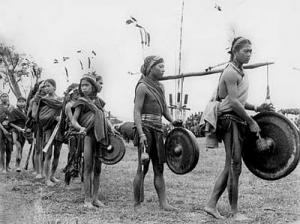What are heritages?

The number of UNESCO-recognized heritages in Vietnam are not many. But what is more important; is how Vietnam has treated the recognized heritages?
VietNamNet’s Khanh Linh asked some cultural researches the following questions: “Is the world heritage title necessary for Vietnam? How many heritages does Vietnam have? Are they too many for Vietnam? Should Vietnam limit the number of heritages?
These questions are raised because recently, the concept “heritage” has been over-used in Vietnam. Anything is called “heritage”. Any place says they have “heritages”. The misuse of the “heritage” concept has not only made wrong awareness of heritages, but also wrong behaviors to each kind of heritages.
Actually, Vietnam has not ranked relics as heritages. It only ranks relics as national or provincial relics.
The “world heritage” title has urged provinces who host the heritages to better understand the value of their heritages, and to be highly aware of preservation of their heritage up to international standards.
In recent years, Vietnam has known many more titles granted by the UNESCO, besides the “world heritage” title.
First of all is the “intangible cultural heritage” title. Hue is still the pioneer when its Hue court music or Nha nhac was recognized by UNESCO, as the intangible cultural heritage of the mankind in 2003. After that gong space of the Central Highlands was recognized in 2005.
Five intangible cultural heritages are not many, especially for a country which is diverse in culture like Vietnam. In 2009, when Vietnam’s quan ho (Bac Ninh love duets) was recognized as a world intangible cultural heritage, China had up to 22 heritages recognized, Japan with 13, Croatia with seven and South Korea with five.
According to UNESCO, intangible cultural heritages must belong to communities and it is difficult to see which heritage is more “valuable”.
The Convention on Preservation of Intangible Cultural Heritages ratified in October 2003, opened a new period in UNESCO’s concept of intangible cultural heritages. Since then, intangible cultural heritages are recognized with two kinds: representative intangible cultural heritages and intangible cultural heritages in need of urgent protection.
The value of the two titles is the same, but the later needs urgent preservation because they may disappear.
After the convention took effective, the Hue royal court music and Central Highlands gong have become the representative intangible cultural heritages. After that, quan ho (2009) and St. Giong festival (2010) were recognized as representative intangible cultural heritages, and ca tru (ceremonial songs) was recognized as intangible cultural heritages in need of urgent protection in 2009.
In UNESCO’s heritage title system includes the world documentary heritage title. Vietnam’s Nguyen Dynasty wood-blocks (2009) and doctorate steles at Hanoi’s Van Mieu (Temple of Literature) (2010) won this title.
Last year, Vietnam’s Dong Van stone plateau is Vietnam’s first geological park and the second in Southeast Asia became a member of the Global Geopark Network (GGN), thanks to the effort of the Vietnam Institute for Geological and Mineral Sciences.
Vietnam also has eight biosphere reserves that have been recognized as the World biosphere reserves, thanks to the efforts of the National Committee for Human and Biosphere of Vietnam. However, not many Vietnamese know about these titles.
At the national conference of Vietnam’s world biosphere reserves and world heritages in 2009, Pham Sanh Chau, Secretary General of the UNESCO Vietnam Committee, urged local governments to be “dynamic” in nominating their heritages to UNESCO. Chau also said that UNESCO is a brand worth $500 million and each UNESCO-recognized heritage can attract 1 billion visitors on average.
VietNamNet makes the above statistics of Vietnam’s world heritages to show that the number of world heritages in Vietnam is not many. It is needed and important to acquire UNESCO’s recognition for Vietnam’s heritages, but it is more important that how Vietnam has treated recognized heritages?









